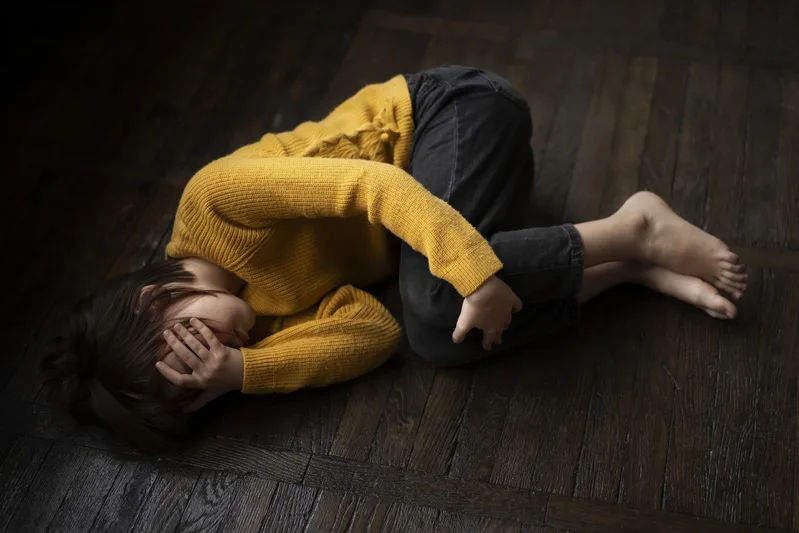
Introduction of Pocso act
Enacted in 2012, the Protection of Children from Sexual Offences POCSO Act 2012 is a landmark legislative framework in India that explicitly addresses the issue of child sexual abuse. This comprehensive regulation recognises children’s fragility and works to protect their rights while offering a strong defence against many sorts of sexual offences. The Act aims to provide a safer environment in which children can flourish by clearly defining offences and imposing severe punishments on offenders. Nonetheless, despite the Act’s vital role in safeguarding children, difficulties remain in putting it into practice and making sure victims receive justice. This article examines the main features and effects of the POCSO Act 2012, highlighting its importance within the larger framework of child protection legislation.
Background of POCSO Act
The alarmingly high rate of child sexual abuse in India and the pressing need for legislative action to address this problem are the roots of the Protection of Children from Sexual Offences (POCSO) Act. This is a thorough history of the POCSO Act 2012:
Historical Context:
- The Indian Penal Code (IPC) and the Juvenile Justice (Care and Protection of Children) Act, of 2000 both handled child sexual assault before the POCSO Act was passed in 2012.
- There were, however, legal protection gaps for children as a result of these rules vagueness when it came to identifying and handling the subtleties of child sexual offenses.
Need for Specialized Legislation:
- The government introduced specialized legislation in response to growing knowledge of the extent of child sexual abuse in India and the shortcomings of current legislation.
- To create a specific legal framework for the prevention, protection, and punishment of child sexual abuse, the Protection of Children from Sexual Offences (POCSO Act 2012) was developed.
Objectives of the POCSO Act:
- The protection of minors from sexual offenses, such as sexual assault, sexual harassment, and pornography, is the main goal of the POCSO Act 2012.
- To act as a deterrence, it attempts to identify certain crimes against children and impose severe punishments on those who commit them.
Consultation and Drafting Process:
- A wide range of stakeholders, including legal professionals, advocates for children’s rights, and non-governmental organizations that deal with child protection, were consulted extensively throughout the formulation of the POCSO Act 2012.
- The Act’s provisions were thoughtfully written to guarantee the defense of children’s rights and interests while also taking the intricacies of child victimization cases into account.
Enactment and Implementation:
- On November 14, 2012, the POCSO Act 2012, which had been approved by the Indian Parliament in 2012, went into effect.
- Since it was passed, the Act has played a key role in offering a framework for the law to deal with cases of child sexual abuse and guarantee victims receive justice through child-friendly processes and specialized tribunals.
Key Provisions of the POCSO Act:
The Protection of Children from Sexual Offences (POCSO) Act, 2012, contains several key provisions aimed at protecting children from sexual abuse and providing justice to victims. Here are the main provisions of the POCSO Act:
1. Definitions and Interpretations:
- The POCSO Act 2012 provides clear definitions of terms such as “child,” “sexual assault,” “sexual harassment,” “child pornography,” etc., ensuring a comprehensive understanding of offenses covered under the Act.
2. Offences and Penalties:
- The Act defines various sexual offenses against children, including but not limited to sexual assault, aggravated sexual assault, sexual harassment, and using a child for pornographic purposes.
- It prescribes stringent penalties for offenders, including imprisonment ranging from three years to life, depending on the severity of the offense.
3. Reporting and Procedures:
- The POCSO Act mandates the reporting of sexual offenses against children, and it outlines the procedures for filing complaints and conducting investigations.
- It emphasizes the importance of child-friendly procedures during the legal process, ensuring the protection and welfare of child victims.
4. Protection of Child Witnesses:
- Special provisions are included in the Act to protect the identity and privacy of child victims and witnesses during legal proceedings.
- The Act allows for the use of special measures such as in-camera proceedings and closed-door hearings to shield child witnesses from trauma and intimidation.
5. Establishment of Special Courts:
- The POCSO Act provides for the establishment of special courts for the speedy trial of cases related to child sexual abuse.
- These special courts are designated to handle POCSO cases exclusively, ensuring timely justice for victims and expeditious disposal of cases.
6. Role of Authorities:
- The Act outlines the roles and responsibilities of various authorities, including law enforcement agencies, child welfare committees, and special public prosecutors, in implementing its provisions.
- It mandates the coordination among different stakeholders to ensure the effective enforcement of the Act and the protection of children from sexual offenses.

Impact and Challenges
Impact:
- Increased Reporting: Since the POCSO Act was passed, more incidences of child sexual abuse have been reported. Victims and their families have been more inclined to come forward and pursue justice as a result of increased knowledge of the applicable laws and the significance of reporting such offenses.
- Specialized Courts: Trials and convictions have proceeded more quickly due to the creation of special courts devoted to POCSO matters. These courts are more prepared to deal empathically and efficiently with delicate matters involving minor victims.
Protection of Child Witnesses: With the knowledge that their safety and anonymity are given priority throughout judicial procedures, more victims have testified against their abusers thanks to the Act’s provisions protecting the identity and privacy of child witnesses.
Public Awareness: The POCSO Act has helped to increase public knowledge about the frequency of child sexual abuse as well as the appropriate legal channels for pursuing justice. More people in the community are supporting victims and their families as a result of this heightened awareness.
Challenges:
- Underreporting: Although more cases are being reported, there is still a big problem with underreporting of child sexual abuse. Fear, shame, or ignorance of the legal alternatives provided by the POCSO Act prevent many incidents from being reported.
- Delays in Justice: Even with the creation of special courts, POCSO cases can have drawn-out legal proceedings, which causes victims’ rights to justice to be denied. These delays are caused by several factors, including procedural complexity and backlogs in the court system.
- Resource Restrictions: Sufficient resources, including forensic facilities, victim support services, and trained people, are necessary for the successful execution of the POCSO Act. Unfortunately, there are obstacles in the way of offering victims prompt and all-encompassing care due to resource limitations, particularly in rural regions.
- Socio-cultural Factors: The POCSO Act’s successful execution is hampered by socio-cultural factors including victim-blaming, societal stigma, and aversion to talking about matters linked to child sexual abuse. To create a supportive atmosphere for victims, these deeply ingrained ideas and attitudes must be addressed.
Awareness and Prevention
Awareness Campaigns:
- Education Initiatives: Incorporate age-appropriate education about personal safety, body boundaries, and safe touch into school curricula.
- Community Outreach: Organize workshops, seminars, and awareness campaigns in communities to educate parents, teachers, caregivers, and children about the signs of child sexual abuse and the importance of reporting.
- Media Engagement: Utilize various media platforms to disseminate information about child sexual abuse, including its prevalence, impact, and available resources for support and reporting.
- Social Media Awareness: Leverage social media platforms to share educational content, survivor stories, and resources related to child sexual abuse prevention and reporting.
Prevention Strategies:
- Empowerment Programs: Offer empowerment programs for children to build self-esteem, assertiveness, and confidence, enabling them to recognize and resist abusive situations.
- Safe Environment: Create and promote safe environments for children in schools, communities, and online spaces through policies, guidelines, and codes of conduct.
- Parental Education: Provide parents and caregivers with training and resources on child protection strategies, communication skills, and ways to support and listen to their children.
- Early Intervention: Implement early intervention programs to identify and address risk factors associated with child sexual abuse, such as poverty, substance abuse, and family dysfunction.
- Professional Training: Offer training programs for professionals working with children, including teachers, healthcare providers, and law enforcement officials, on recognizing signs of abuse, mandatory reporting laws, and trauma-informed practices.
Support Services:
- Crisis Intervention: Establish helplines, hotlines, and crisis centers to provide immediate support, counseling, and referrals for child sexual abuse victims and their families.
- Therapeutic Services: Offer trauma-informed therapy and counseling services for child sexual abuse survivors to facilitate healing and recovery.
- Legal Assistance: Provide legal aid and support for victims and their families throughout the legal process, ensuring access to justice and protection under the law.
Collaboration and Advocacy:
- Multi-Sector Collaboration: Foster collaboration among government agencies, non-governmental organizations (NGOs), civil society organizations, and communities to develop and implement comprehensive prevention strategies.
- Policy Advocacy: Advocate for policy changes and reforms to strengthen child protection laws, improve support services, and address systemic issues contributing to child sexual abuse.
- Community Engagement: Engage community leaders, religious institutions, and other stakeholders in raising awareness, challenging cultural norms that perpetuate abuse, and promoting a collective commitment to protecting children.
Conclusion
In conclusion, India’s Protection of Children from Sexual Offences (POCSO) Act is a vital legislative framework that aims to protect kids from being sexually abused or exploited. The Act aims to guarantee victims’ justice and offenders’ responsibility through its strict rules, specialized courts, and emphasis on child-friendly processes. Though the POCSO Act is a big start in the right direction, thorough knowledge, prevention, and teamwork are crucial to the law’s efficacy in combating child sexual abuse. We can build safer conditions for children to thrive by educating communities, putting preventive measures in place, and increasing awareness about child sexual abuse. Furthermore, for the Act to be implemented effectively, issues including underreporting, financial limitations, and sociocultural obstacles must be addressed. We can strive towards a society where every kid is safe, empowered, and free from the fear of sexual abuse by supporting policy reforms, bolstering support services, and encouraging multi-sector collaboration. For children who are at risk, the POCSO Act essentially represents a ray of hope and a shared commitment to their rights, safety, and well-being. To guarantee that the spirit of the Act is translated into real protection and justice for all children across the country, ongoing efforts and group action are essential.
The offences are classified as non-bailable under the POCSO Act. Through several changes to the aforementioned Act, the author has masterfully captured its intent.
To protect children from sexual abuse and offences, the Indian government passed the Protection of Children from Sexual offences (POCSO) Act, 2012. According to the Act, a person under the age of eighteen is considered a kid. The POCSO Act stipulates penalties based on the seriousness of the act.




1 thought on “POCSO Act”